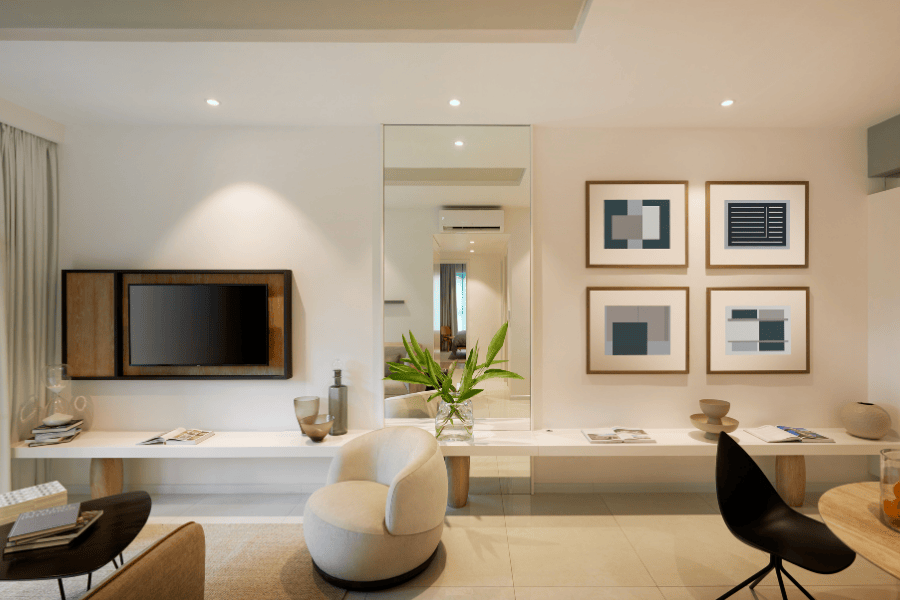When it comes to painting your home, white may seem like the easiest choice. After all, it’s classic, clean, and goes with everything. But any homeowner who’s stared at a wall of white paint swatches knows—white isn’t just white.
With undertones, finishes, and lighting conditions to consider, selecting the right white can be surprisingly complex. The good news? With a bit of guidance, you can confidently choose the perfect shade of white to brighten your space and bring your vision to life.

Why White Paint is So Popular
White paint has long been a favorite for interiors. It reflects light beautifully, makes rooms feel larger, and offers a versatile backdrop for any style of décor, from modern minimalism to cozy farmhouse.
Whether you’re freshening up a small bathroom or designing an open-concept living space, white provides a blank canvas that allows other colors, textures, and architectural details to shine.
But not all whites are created equal. That’s where things get interesting.
The Undertone Dilemma
The first step in narrowing down your options is understanding undertones. Every white paint has a subtle color influence beneath the surface—this is what gives it character.
Here are the most common undertone families:
- Warm whites have hints of yellow, red, or pink. They create a cozy, inviting atmosphere and pair well with traditional décor and wood accents.
- Cool whites lean into blue, green, or gray. These feel crisp and clean, ideal for modern spaces or rooms with lots of natural light.
- True whites are the most neutral, with very little undertone. They can look stark in some spaces but are often used in galleries or contemporary interiors.
Your existing furnishings, flooring, and lighting will help guide you in selecting the undertone that works best in your home. For example, if your living room has warm-toned wood floors and beige upholstery, a cool white may clash, while a warm white will complement the space naturally.
How Lighting Affects White Paint
Natural and artificial light will dramatically change the way a white paint appears in your home. A white that looks pristine in the store may feel dingy or cold once it’s on your walls.
- North-facing rooms tend to have cooler light, which can make whites feel more gray or blue. Warm whites can help balance this effect.
- South-facing rooms receive a lot of warm, natural sunlight. Both warm and cool whites work here, depending on the mood you want to create.
- East- and west-facing rooms have shifting light throughout the day, so it’s especially important to test paint samples on the wall and observe how they change from morning to evening.
Sample Before You Commit
Even with a strong sense of what you’re looking for, it’s essential to sample your top choices. Paint swatches directly onto your wall (or use large peel-and-stick samples) and view them in different lighting conditions over a few days.
Look for:
- How the color looks in natural daylight vs. evening lighting.
- Whether it complements your trim, cabinets, or flooring.
- How it makes you feel in the space—calm, energized, or perhaps overwhelmed.
Don’t rush the decision. Taking this extra step can prevent costly repainting in the future.
Popular White Paint Favorites
While the “best” white paint will depend on your space, some tried-and-true favorites consistently perform well in a variety of homes:
- Benjamin Moore White Dove – A soft, warm white that works well in living spaces and bedrooms.
- Sherwin-Williams Alabaster – Creamy and warm, ideal for cozy, welcoming interiors.
- Behr Ultra Pure White – A crisp, bright white with minimal undertone, perfect for trim and ceilings.
- Farrow & Ball All White – Clean and contemporary with no added pigments.
Final Thoughts
Choosing the right shade of white is more of an art than a science. It’s about how the color interacts with your home’s architecture, lighting, and personal style.
When in doubt, work with a professional painter or color consultant who can guide you through the selection process. The result will be a timeless, fresh foundation that elevates every room.

Leave a Reply